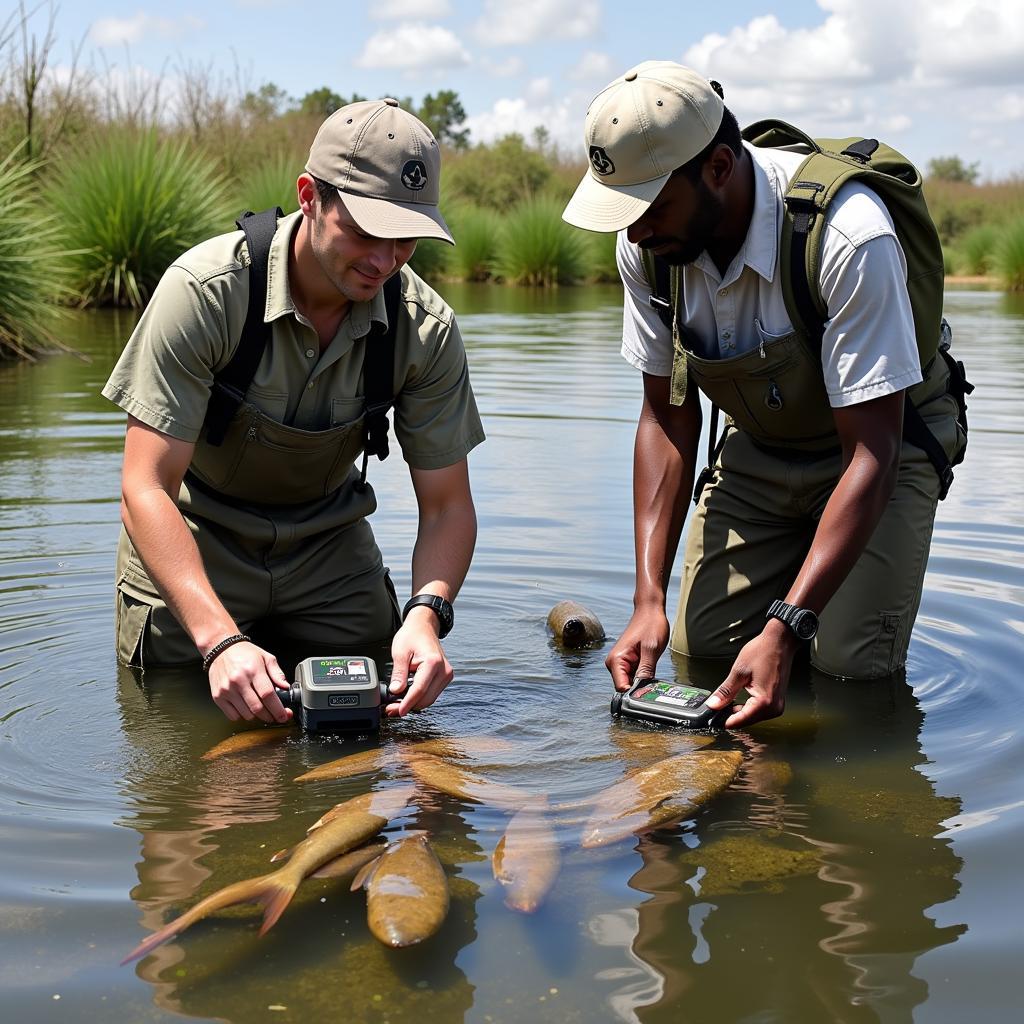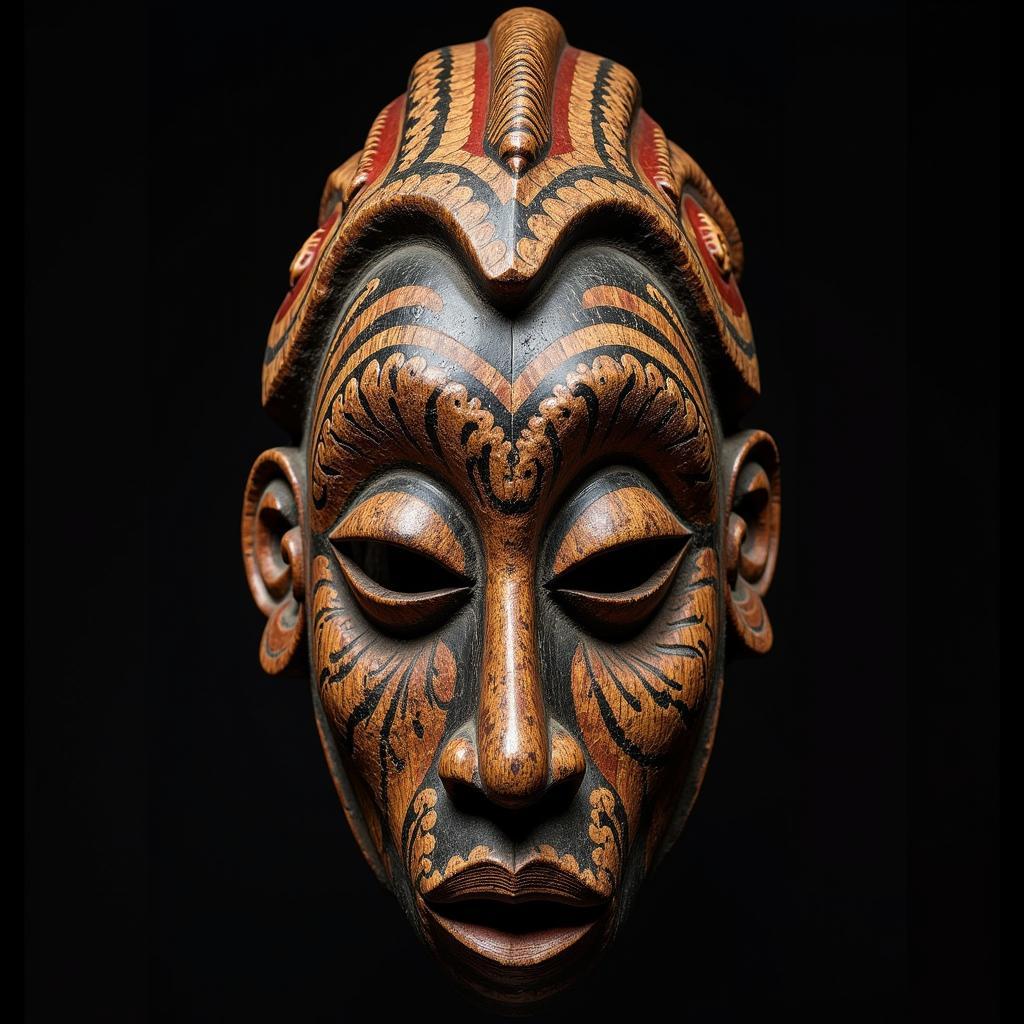African Elephants IUCN: A Fight for Survival
African elephants, iconic symbols of the savanna, are facing a growing crisis. Classified as vulnerable and endangered by the International Union for Conservation of Nature (IUCN), these majestic creatures are threatened by habitat loss, human-wildlife conflict, and the persistent scourge of poaching. Understanding the plight of African elephants and the crucial role of the IUCN in their conservation is essential to ensuring their survival for generations to come.
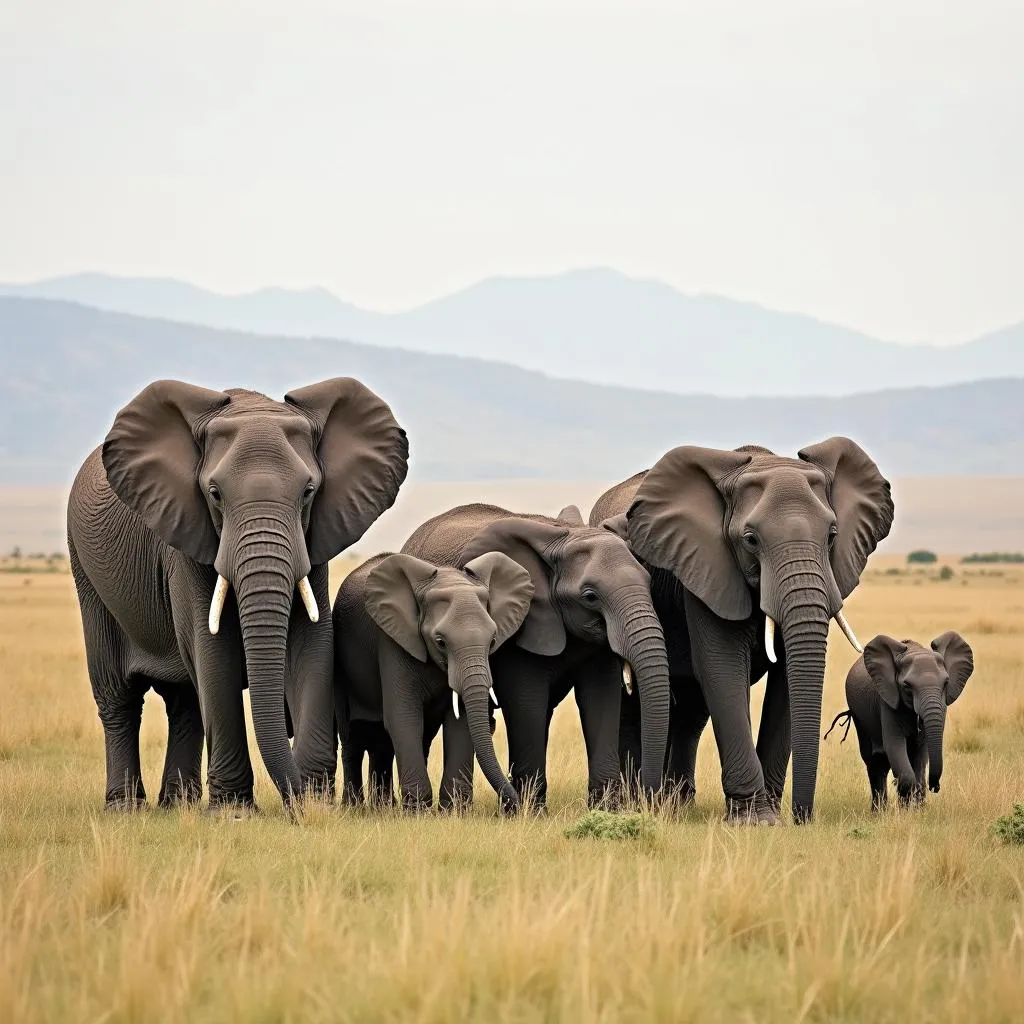 African elephant family grazing in the savanna
African elephant family grazing in the savanna
The Giants of Africa: Forest vs. Savanna
African elephants are divided into two distinct species: forest elephants and savanna elephants. While both captivate our imaginations, they differ significantly in their physical adaptations, social structures, and the environments they call home.
Savanna elephants, the larger of the two species, roam the grasslands and woodlands of sub-Saharan Africa. Their immense size, reaching heights of up to 4 meters at the shoulder, makes them the largest land animals on Earth. Their iconic tusks, present in both males and females, are used for digging, stripping bark, and defense.
Forest elephants, as their name suggests, inhabit the dense rainforests of Central Africa. Smaller in stature than their savanna counterparts, they possess straighter, downward-pointing tusks, perfectly adapted for navigating their dense forest habitat. These elephants play a crucial role in maintaining the health of the rainforest ecosystem by dispersing seeds and creating clearings that allow sunlight to reach the forest floor.
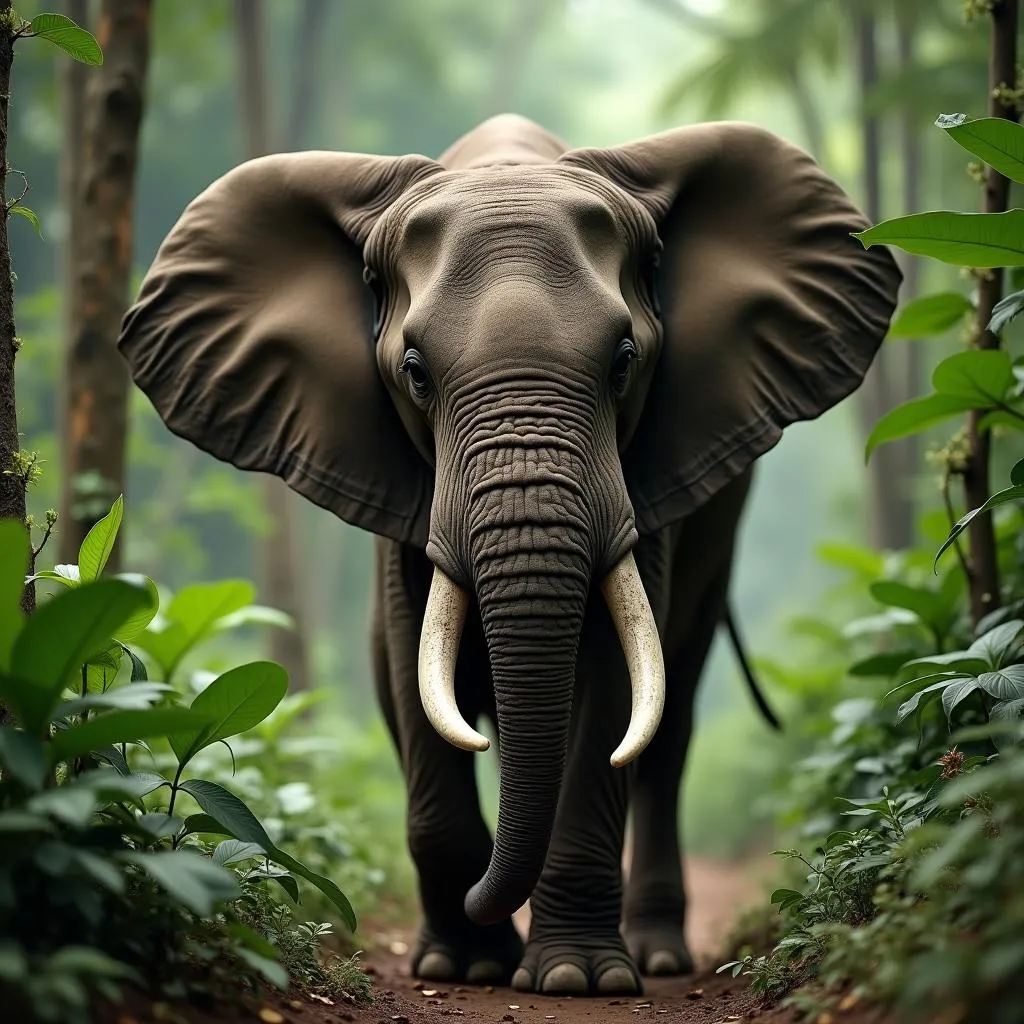 African forest elephant in the dense rainforest
African forest elephant in the dense rainforest
The IUCN Red List: A Barometer of Survival
The IUCN Red List of Threatened Species is the world’s most comprehensive inventory of the global conservation status of plant and animal species. It serves as a critical indicator of the health of our planet’s biodiversity and the urgency of conservation efforts. The IUCN utilizes a rigorous assessment process to classify species into different categories based on their risk of extinction.
For African elephants, the IUCN Red List paints a stark picture:
- African forest elephants (Loxodonta cyclotis) are classified as Critically Endangered, indicating they face an extremely high risk of extinction in the wild.
- African savanna elephants (Loxodonta africana) are categorized as Endangered, meaning they are at a very high risk of extinction.
These classifications underscore the urgent need for intensified conservation actions to protect both species.
A Multifaceted Threat: Unveiling the Challenges
The decline of African elephants stems from a complex interplay of factors, each posing a significant threat to their survival:
-
Habitat Loss and Fragmentation: As human populations grow and expand, elephant habitats are increasingly being converted to farmland, settlements, and infrastructure. This habitat loss not only reduces the space available for elephants but also fragments their populations, making them more vulnerable to genetic isolation and disease.
-
Human-Wildlife Conflict: With diminishing habitats, elephants are increasingly coming into contact with humans, leading to conflict. Crop raiding, damage to property, and, tragically, loss of human life can occur. This conflict often results in retaliatory killings of elephants, further impacting their populations.
-
Poaching: Despite international bans and increased anti-poaching efforts, the illegal ivory trade continues to pose a grave threat to African elephants. Driven by demand, primarily from Asian markets, poachers target elephants for their tusks, decimating populations and leaving a trail of devastation.
-
Climate Change: As climate change intensifies, it exacerbates existing threats to elephants. Prolonged droughts, for example, can lead to increased competition for resources, heightening human-wildlife conflict and making elephants more susceptible to disease.
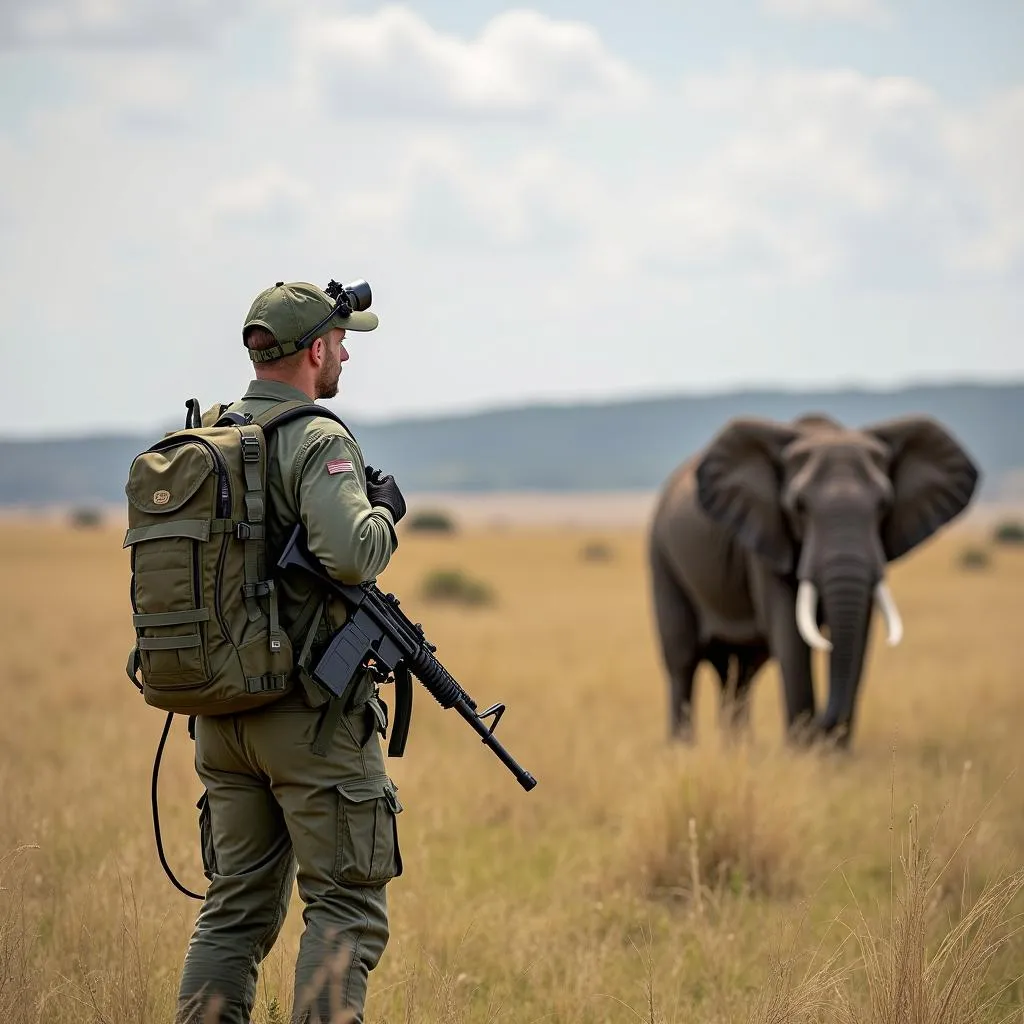 Anti-poaching ranger patrolling the African savanna
Anti-poaching ranger patrolling the African savanna
The IUCN’s Role: A Beacon of Hope
The IUCN plays a vital role in elephant conservation through its multifaceted approach:
- Scientific Research and Monitoring: The IUCN gathers and analyzes data on elephant populations, distribution, and threats to inform conservation strategies.
- Policy Advocacy: The IUCN works with governments and international bodies to advocate for stronger policies and regulations to protect elephants, such as the ban on the international ivory trade.
- On-the-Ground Conservation: The IUCN supports a wide range of conservation projects on the ground, including anti-poaching patrols, habitat restoration, and community-based conservation initiatives.
- Raising Awareness: The IUCN educates the public about the plight of elephants and the importance of conservation through publications, campaigns, and events.
Securing a Future for African Elephants
Protecting African elephants demands a global commitment and collaborative action. Here’s how you can contribute:
- Support Ethical Tourism: Choose tour operators and lodges committed to responsible tourism practices that benefit both wildlife and local communities.
- Spread Awareness: Share information about the threats facing elephants and the importance of conservation with your friends, family, and on social media.
- Support Conservation Organizations: Donate to or volunteer with reputable organizations working to protect elephants and their habitats.
- Be a Responsible Consumer: Avoid purchasing ivory products and support sustainable alternatives.
The future of African elephants hangs in the balance, but there is hope. By understanding the threats they face, supporting the crucial work of the IUCN, and taking action in our own lives, we can help ensure that these magnificent creatures continue to roam the African landscape for generations to come.
FAQ
1. What is the difference between African forest elephants and African savanna elephants?
While both are African elephants, forest elephants are smaller, have straighter tusks, and live in dense rainforests. Savanna elephants are larger, have curved tusks, and roam grasslands and woodlands.
2. Why are African elephants endangered?
African elephants are endangered due to habitat loss, poaching for their ivory, human-wildlife conflict, and the impacts of climate change.
3. What is the IUCN’s role in elephant conservation?
The IUCN plays a vital role in elephant conservation through scientific research, policy advocacy, on-the-ground conservation projects, and raising public awareness.
4. How can I help protect African elephants?
You can help by supporting ethical tourism, spreading awareness, supporting conservation organizations, and being a responsible consumer by avoiding ivory products.
5. Is there hope for the survival of African elephants?
Yes, there is hope. With increased conservation efforts, stronger policies, and global awareness, we can secure a future for these magnificent creatures.
Need Help Planning Your African Safari?
Contact us! Our team of travel experts is ready to help you craft the perfect African adventure.
Phone: +255768904061
Email: [email protected]
Address: Mbarali DC Mawindi, Kangaga, Tanzania
We offer 24/7 customer support and are passionate about creating unforgettable experiences.
